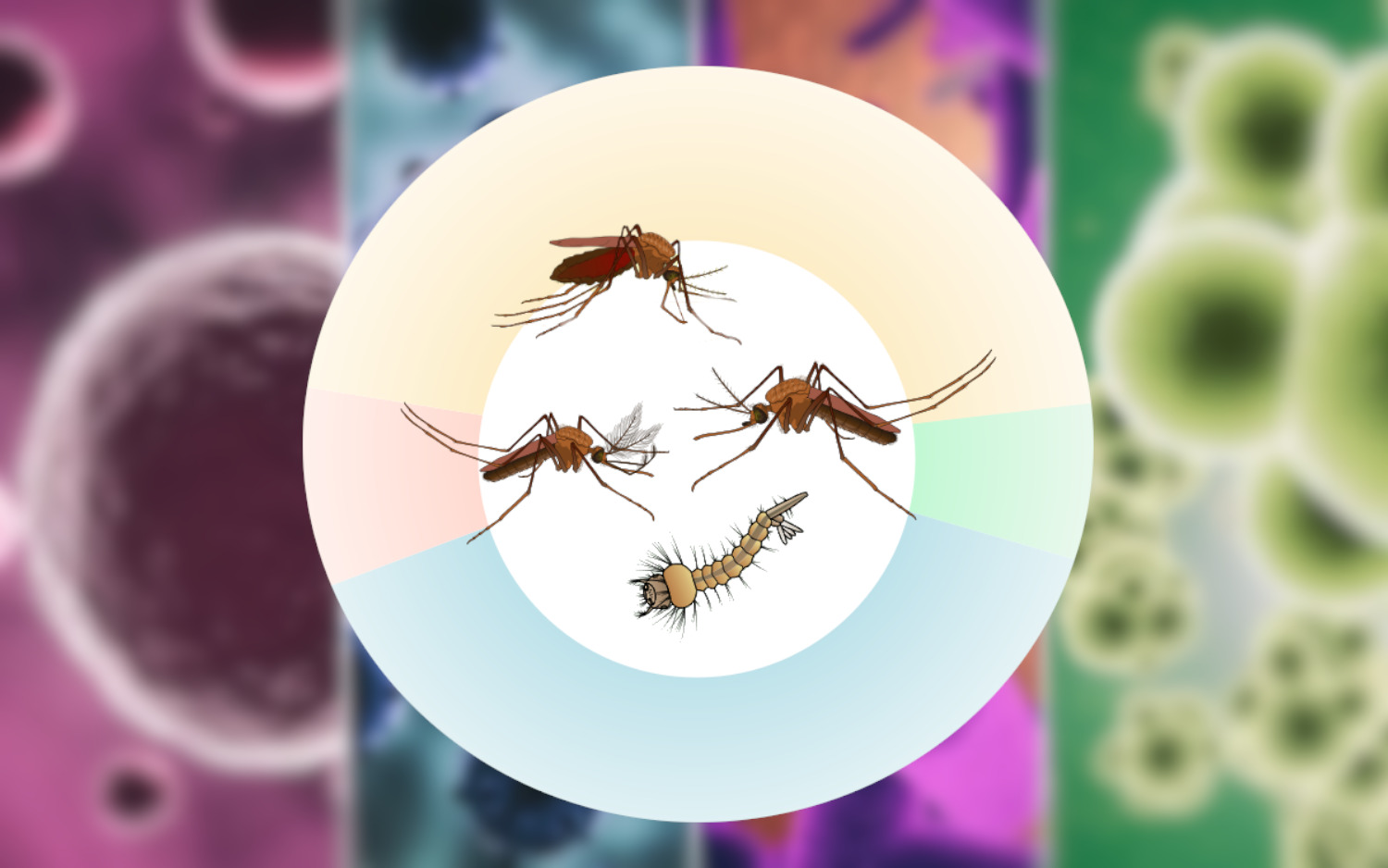Scientific reports, 13, Article number: 18980, 2023
Abstract
Microorganisms present in mosquitoes and their interactions are key factors affecting insect development. Among them, Wolbachia is closely associated with the host and affects several fitness parameters. In this study, the bacterial and fungal microbiota from two laboratory Culex quinquefasciatus isolines (wild type and tetracycline-cured) were characterized by metagenome amplicon sequencing of the ITS2 and 16S rRNA genes at different developmental stages and feeding conditions. We identified 572 bacterial and 61 fungal OTUs. Both isolines presented variable bacterial communities and different trends in the distribution of diversity among the groups. The lowest bacterial richness was detected in sugar-fed adults of the cured isoline, whereas fungal richness was highly reduced in blood-fed mosquitoes. Beta diversity analysis indicated that isolines are an important factor in the differentiation of mosquito bacterial communities. Considering composition, Penicillium was the dominant fungal genus, whereas Wolbachia dominance was inversely related to that of Enterobacteria (mainly Thorsellia and Serratia). This study provides a more complete overview of the mosquito microbiome, emphasizing specific highly abundant components that should be considered in microorganism manipulation approaches to control vector-borne diseases.

